


Rear Admiral Frederic R. Harris
(April 10, 1875 – July 20, 1949) New York City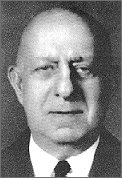
Admiral Harris was one of the country's most outstanding philatelists of his time. He built world-famous collections of Ceylon and Italian States, considered the best ever formed in the United States. His most famous collection was that of Hawaii. He financially supported and co-authored the seminal book, Hawaii, Its Stamps and Postal History (1948) with Henry A. Meyer, William J.Davey, John K. Bash and others.
Admiral Harris was secretary of the Directing Committee for the Third International Philatelic Exhibition (TIPEX) held in New York City in 1936. He stepped in as chairman of the 1947 Centenary International Stamp Exhibition (CIPEX) upon the sudden death of Alfred F. Lichtenstein less than three months before the exhibition was to open.
He was a founder
and trustee of the Philatelic Foundation and was serving as its
president and expert at the time of his death.
Saul Newbury
(August 14, 1870 – February 1, 1950) Chicago
Newbury was a distinguished collector and student of classic stamps. His collection of U.S. 1847-1869 issues won the Grand Award at the Centennial International Philatelic Exhibition (CIPEX) in 1947. Other world-famous collections were his Brazil Bull's Eyes, Colombia and States, and Shanghai.
Newbury strongly
supported the research of noted specialists. He financed the work
of Stanley B. Ashbrook
that led to his book, The United States One-Cent Stamp of 1851-57
(1938). He also supported Chicago philately and was aptly named
"Chicago's No. 1 Collector." In his honor, in 1945, the
Chicago Philatelic Society established the Saul Newbury Award,
"presented annually to the Chicagoan who, over the years has contributed
most
to philately." The first recipient was David
Lidman.
Walter Stone Scott
(February 17, 1871 – October 29, 1948) New York City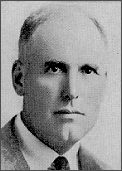
Walter Scott was the most famous stamp auctioneer of his time. Son of John Walter Scott, he entered into the stamp business in the 1890s. He soon had his own firm and held a series of 12 auctions under his name from 1896 to 1898. By the early 20th century he had established himself as a highly-regarded free-lance auctioneer and began a long career crying sales for nearly every auction house in New York City. In his lifetime, Walter Scott sold more lots of stamps than any other auctioneer.
He also established his reputation as an independent expert, and was highly regarded for his integrity. He was often retained by estates to dispose of their philatelic material. The estate of Col. E.H.R. Green retained Walter to advise them about selling Green's enormous accumulation. He organized 29 auctions during 1942-1946 to successfully disperse that material.

Nicolas Sanabria
(November 4, 1889 – December 1, 1945) New York City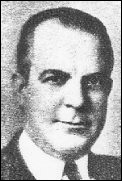
Sanabria was a world-famous specialist dealer, auctioneer and cataloguer of aerophilately. He began his career as a stamp dealer in 1927. His auctions of mainly air mail material began in 1931 and continued through the rest of his life. His Sanabria's Air Post Journal began in 1935 and was continued after his death by his son Nicholas Sanabria.
In 1936 Sanabria
acquired the catalog name, Standard Catalog of Airpost Stamps,
from the Scott Stamp and Coin Co., and published three editions
of it in 1936, 1937 and 1939. In 1940 he renamed it Sanabria's
Airpost Catalogue, and dropped all connections with Scott.
He continued to improve and expand it into the airpost catalog of
record. The Sanabria Catalog became the most famous in the world
of aerophilately; Sanabria was working on the 1946 edition of the
catalog when he died.
James Benjamin Seymour
(1869 – June 11, 1950) England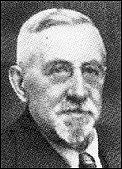
Seymour was a noted student, collector and writer on the classic stamps of Great Britain. His world famous collection won many national and international awards. He wrote the major part of the section on Great Britain line-engraved stamps in Kohl-Briefmarken-Handbuch (1930). His book, Stamps of Great Britain: The Line-engraved Issues, 1840 to 1853 was published in two parts (1934, 1937). At the time of his death, he had just completed a second edition (1950).
He was honored
for his work with many awards from British, French and German philatelic
societies. He was president of the International Philatelic Union,
and in 1946 he was elected a corresponding member of l'Academie
de Philatélie. Seymour was an active member and president
of the Royal Philatelic Society London. He signed the Roll of Distinguished
Philatelists in 1931.
Rev. William Hogarth Tower
(1871 – December 14, 1950) New Jersey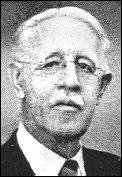
Rev. Tower was a strong advocate for establishing a stamp room in the Princeton University Library. His purpose was to create a center for the study of philately and postal history in an academic setting. In 1946, he succeeded in establishing the room and was its curator. Through his efforts and those of the Society of Philatelic Americans, many important philatelic gifts were received.
Tower bequeathed his collections to the Princeton Library. His most important collection was famous for its early English postal history, mostly from the pre-stamp period. He also collected war covers, and Lincolniana.

Donald W. Martin
(September 24, 1890 – April 3, 1952) Cleveland, Ohio
Martin was an activist for organized philately nationally and in the Cleveland, Ohio area. He joined the Garfield-Perry Stamp Club there in 1926 and served it in many positions, including president in 1936-1937. For his outstanding service, the club named him Life Member No. 1, and presented him its Hanford and Herman trophies.
Martin was the
Cleveland area representative for the National Federation of Stamp
Clubs, a nationwide philatelic organization founded by Harry
Lindquist. He was a long-time active member of the American
Philatelic Society, holding many positions, most notably on the
Board of Vice Presidents from 1939 to 1943.
Walter R. McCoy
(January 12, 1880 – June 20, 1952) New York City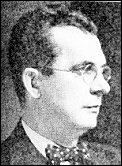
Walter McCoy was a noted specialist in the U.S. Bureau Issue stamps. He was also an active promoter for the advance of philatelic scholarship.
McCoy built an unsurpassed collection comprising 20,580 plate number pieces of the Bureau Issues. This collection was written up by U.S. expert George B. Sloane and won a gold medal at the Centenary International Exhibition (CIPEX) held in New York City in 1947. In 1964, his widow Ethel B. McCoy gave the collection to the Collectors Club of New York.
Walter McCoy was founder member number seven of the Philatelic Plate Number Association, which changed its name in 1930 to the Bureau Issues Association (now the United States Stamp Society). He served as the BIA vice-president from 1930 until his death. He is a member of the USSS Hall of Fame.
McCoy was an active member of the Collectors Club of New York, serving as president and in other offices. He edited its journal, Collectors Club Philatelist from 1939 to 1942.
McCoy was a member of the Board of Governors of the American Philatelic Congress from 1945 until his death. He edited the Congress Book from 1945 to 1950. McCoy was elected Congress president in 1951 but held office for less than a year. In his memory, his widow Ethel B. McCoy established and funded the Walter R. McCoy Award for the best article in each year's Congress Book.

Judge David D. Caldwell
(January 5, 1870 – March 5, 1953) Washington, D.C.
Judge Caldwell was a nationally-known philatelic figure who was called “Washington's Number One Philatelist.” He was an organizer of the National Stamp Conference held in Washington, D.C. in 1937. This event was modeled after the Philatelic Congress of Great Britain.
Caldwell was chairman of the Postage Stamp Centenary Convention and Exhibition held May 4-8, 1940 in Washington. D.C. It was the largest Penny Black Centenary celebration anywhere because the scheduled celebration in London was curtailed by World War II.
Called “The
Judge,” Caldwell served as attorney for the APS, and advised
the Post Office Department on philatelic matters. Caldwell was a
founder and trustee of the National Philatelic Exhibition (NAPEX),
which has held national shows in the Washington, D.C. area since
1950.
Erik F. Hurt
(1890 – January 30, 1952) England
Hurt was a renowned specialist in the private and local posts of the world. At the age of 15 he became a specialist in postal history, but soon developed a life-long collecting interest in local posts of the world (other than U.S.), about which he wrote extensively.
In the 1930s Hurt edited and published The Record of Philately, later The Illustrated Philatelic Record, devoted to postal history and local posts. From 1942 to 1945 he co-wrote with L.N. and M. Williams the Priced Catalogue of Local Postage Stamps in five volumes. (An expanded version was published in 1960 in Billig's Philatelic Handbook series as Handbook of Private Local Posts.)
Hurt wrote extensively in many journals. Of note was his article “The Mail Service To and From Greenland under the Royal Greenland Company,” in The American Philatelist, Nov 1940. He and Denwood Kelly wrote The Danube Steam Navigation Company (1950).

Theresa Maria Clark
(c.1890 – 22 December 1953) New York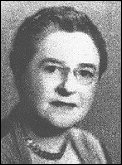
Theresa M. Clark (nee Scheidemantel) spent her entire philatelic career as an influential editor and writer. She joined the Scott Stamp and Coin Company about 1908, first working in the approval department. John N. Luff soon appointed her Scott's chief album editor, a position she held until her retirement in 1946. While at Scott, in 1912 she met her husband-to-be, Hugh M. Clark.
In 1935, when the
Clarks purchased Scott Stamp and Coin Company and reorganized it
as Scott Publications, they became co-editors of the 1935 and 1936
editions of the Scott Standard Postage Stamp Catalogue. In
1935, Theresa also became the editor of “The Chronicle of New
Issues” which appeared in Scott's Monthly Journal,
continuing until 1946. In that influential position, she became
an established expert on philatelic color nomenclature, choosing
the color names for all new issues.
Dr. James C. Goodwin
(September 26, 1902 – August 3, 1953) Canada
Dr. Goodwin specialized in Canada's stamps and postal history and was considered a leading authority in these areas. His collections, most notably of Upper Canada, and the Toronto and Niagara districts, were considered among the best ever formed. His collection of Upper Canada was called “a small museum.” Besides containing stamps, it included books, prints, medals, old letters and documents, with special emphasis on those related to naval and military history.
In 1951, Dr. Goodwin
was elected president of the Toronto Stamp Collectors Club and in
1953 he succeeded Vincent
G. Greene as president of the Canadian Association for Philatelic
Exhibitions (CAPEX). He was a founder of the Postal History Society
of the Americas, now the Postal History Society, Inc.
Al Van Dahl
(February 4, 1884 – March 4, 1954) Oregon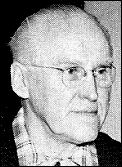
Van Dahl was an active editor and publisher, known for his famous stamp paper, Western Stamp Collector. It began as a column in the May 7, 1931 issue of his weekly newspaper, the Mill City Logue.
Western Stamp Collector appeared as a separate weekly publication on February 9, 1933 and as a semi-weekly beginning on November 9, 1933. It was the only semi-weekly publication in philatelic history, and with the exception of May 17, 1939 to February 18, 1947, continued that way through the issue of February 26, 1972, when then-publisher Arlene Van Dahl returned WSC to weekly publication. The exception period was caused by the wartime shortage of newsprint.
Van Dahl also published the journals Covers and Postal Stationery, and The Masonic Philatelist, and a number of philatelic books on various subjects. Van Dahl's printing plant was called "The House that Stamps Built."
Return to top of page



